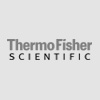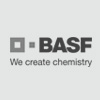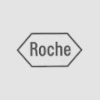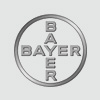Methods to estimate the concentration and yield of the protein
In order to select the different fractions, monitor the purification process and to measure the amount of protein being purified we run SDS-PAGE at different stages of the purification process. This method gives us a rough measure of the amounts of different proteins in the mixture, and but cannot distinguish between proteins having similar molecular weight.
If the protein has a distinguishing spectroscopic feature or an enzymatic activity, we use this property to detect and quantify the specific protein, and to select the fractions of the separation, that contains the protein. If antibodies against the protein are available then we use western blotting and ELISA to specifically detect and quantify the amount of desired protein. Some proteins function as receptors and can be detected during purification steps by a ligand binding assay, often using a radioactive ligand.
We also use Bradford assay or UV abosorption at 260nm in order to quantify the total protein.
Four spectroscopic methods are routinely used to determine the concentration of protein in a solution (1). These include measurement of the protein's intrinsic UV absorbance and three methods which generate a protein-dependent color change; the Lowry assay (2), the Smith copper/bicinchoninic assay (3) and the Bradford dye assay (4). Although one or more these methods is used routinely in almost every biochemical laboratory, none of the procedures are particularly convenient, for the reasons described below.
The first, UV absorbance, requires that a pure protein with known extinction coefficient be used, in a solution free of interfering (UV absorbing) substances. As an approximation, the protein concentration of a solution can be estimated by using either of the following equations;
A280 = 1 A (mL/cm mg) x [Conc.] (mg/mL) x 1 (cm)
A205 = 31 A (mL/cm mg) x [Conc.] (mg/mL) x 1 (cm)
Different proteins, however, have widely different extinction coefficients at both 280 and 205 nm, and concentration estimates obtained this way should be viewed with considerable skepticism. Again, this assay requires that the protein solution be free of other UV absorbing substances, and that the measurements be made using a quartz cuvette.
The Lowry and copper/bicinchoninic assays are based on reduction of Cu2+ to Cu1+ by amides. Although this makes them potentially quite accurate, they require the preparation of several reagent solutions, which must be carefully measured and mixed during the assay. This is followed by lengthy, precisely timed incubations at closely controlled, elevated temperatures, and then immediate absorbance measurements of the unstable solutions. Both assays may be affected by other substances frequently present in biochemical solutions, including detergents, lipids, buffers and reducing agents (1). This requires that the assays also include a series of standard solutions, each with a different, known concentration of protein, but otherwise having the same composition as the sample solutions.
The Bradford dye assay is based on the equilibrium between three forms of Coomassie Blue G dye. Under strongly acid conditions, the dye is most stable as a doubly-protonated red form. Upon binding to protein, however, it is most stable as an unprotonated, blue form.
The Bradford assay is faster, involves fewer mixing steps, does not require heating, and gives a more stable colorimetric response than the assays described above. Like the other assays, however, its response is subject to influence from non protein sources, particularly detergents, and becomes progressively more nonlinear at the high end of its useful protein concentration range. The response is also protein dependent, and varies with the composition of the protein. These limitations make the protein standard solutions necessary.
References:
1. Stoscheck, C. 1990 "Quantification of Protein" Methods in Enzymology , 182:50-68.
2. Lowry, O. Rosebrough, A., Farr, A. and Randall, R. 1951 J. Biol. Chem . 193:265.
3. Smith, P. et al., (1985) Anal. Biochem. 150:76-85.
4. Bradford, M. 1976 "A Rapid and Sensitive Method for the Quantitation of Microgram Quantities of Protein Utilizing the Principle of Protein-Dye Binding" Anal. Biochem. 72:248-254.
5. Cabib, E. and Polacheck, I. 1984 "Protein assay for dilute solutions." Methods in Enzymology, 104:318-328.
















